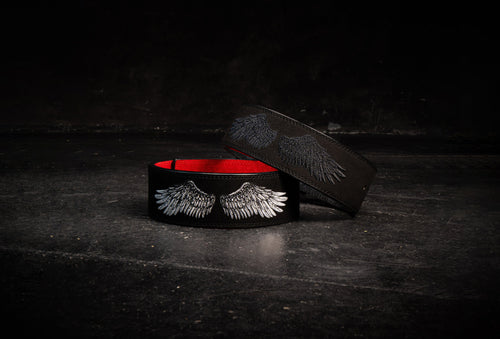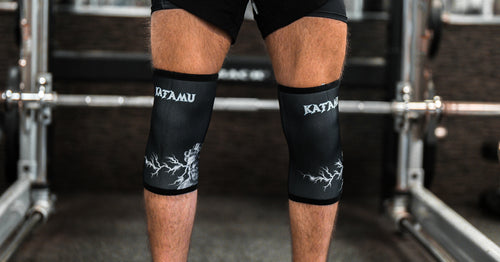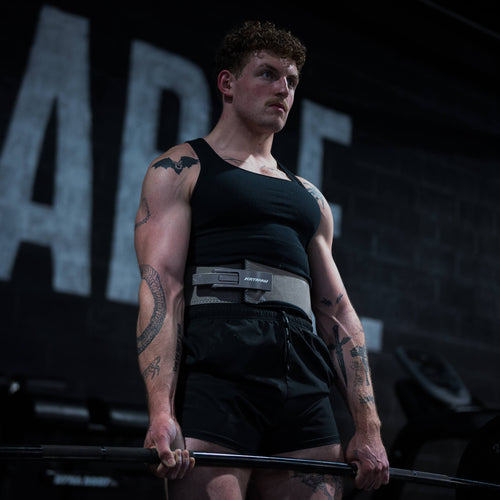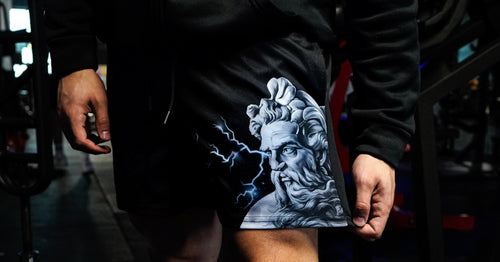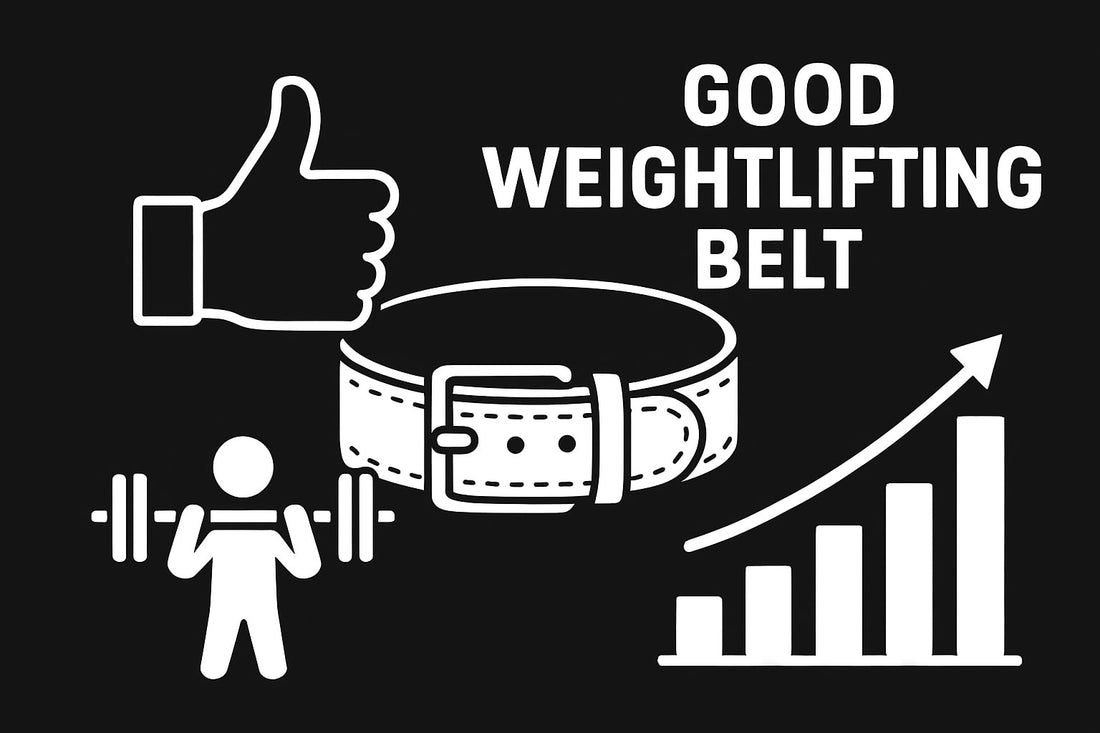A good weightlifting belt is a game-changer for anyone serious about lifting in 2025. It is more than just an accessory, it is a tool that can boost your safety, performance, and confidence every time you walk into the gym.
Choosing the right belt can help you lift heavier, protect your back, and push your limits with peace of mind. This guide gives you expert advice on how to pick, use, and maintain the best belts for your training.
You will discover the benefits of belts, the latest types, how to find your perfect fit, tips for proper use, care routines, and top recommendations for 2025. Ready to take your lifts to the next level? Let us get started.
Why Use a Weightlifting Belt?
A good weightlifting belt is more than just a gym accessory in 2025. It’s a powerful tool that can make a real difference in your training. Whether you’re lifting for strength, power, or performance, understanding the benefits and proper use of a good weightlifting belt will help you lift smarter and safer.
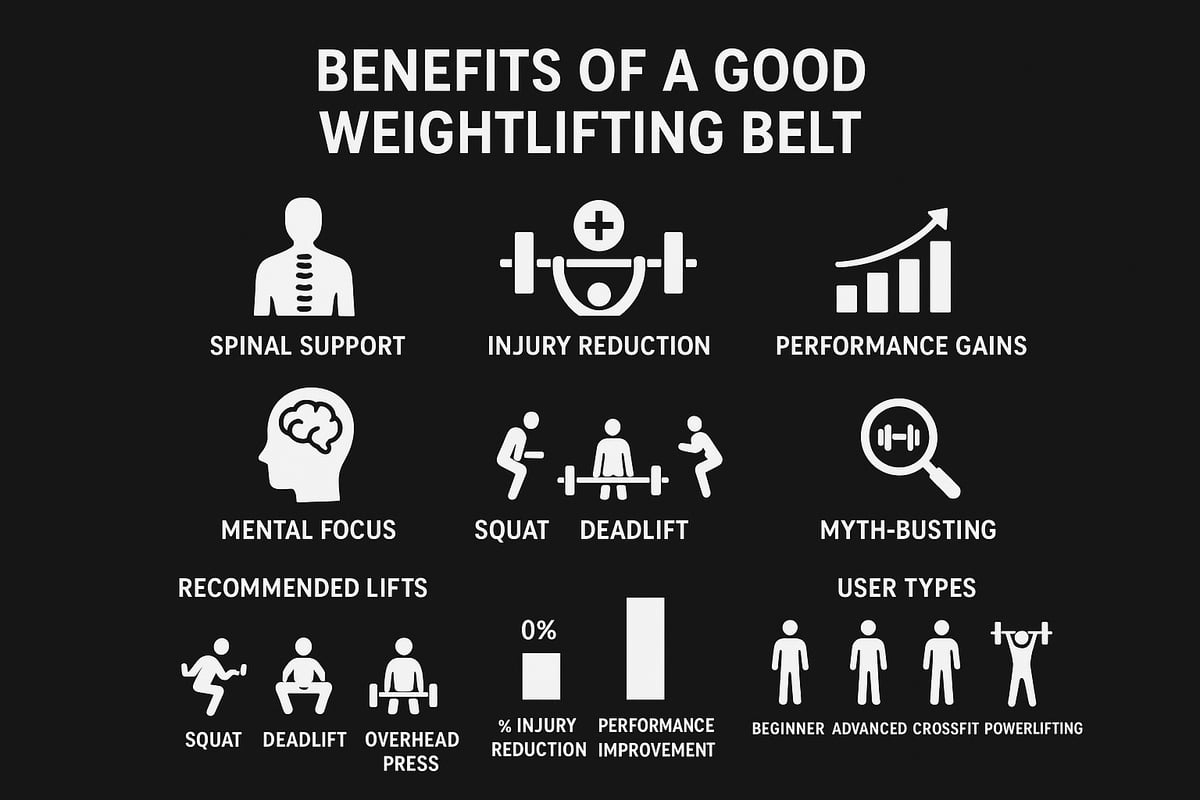
Enhanced Core Stability and Injury Prevention
A good weightlifting belt boosts your body’s natural bracing ability. By increasing intra-abdominal pressure, the belt stabilizes your spine during heavy lifts and keeps your core tight. This support is crucial for protecting your lower back, especially when pushing your limits.
Research shows fewer lower back injuries among those who use a good weightlifting belt with proper technique. For a deeper dive into the biomechanics, check out The Science Behind Weightlifting Belts, which explains how belts create a safer lifting environment.
Improved Performance in Key Lifts
Many lifters find that a good weightlifting belt helps them move more weight in squats, deadlifts, and presses. By providing extra stability, the belt allows for stronger force transfer from your legs and hips through your torso.
Studies have observed lifters hitting new personal records, with 1RM improvements of 5–15% when wearing a good weightlifting belt. Top powerlifters and Olympic athletes rely on belts for their biggest lifts, proving their impact on real-world performance.
Psychological Benefits and Confidence
Wearing a good weightlifting belt is not just physical—it’s mental, too. The belt acts as a cue to brace your core and focus before each heavy set. Many athletes say the ritual of tightening their belt boosts their confidence and helps them attack big lifts with purpose.
This mental edge can turn nerves into determination. Even recreational lifters report feeling more secure and ready for challenging workouts with a good weightlifting belt on.
When a Belt Is Most Useful
A good weightlifting belt shines during specific exercises and scenarios:
- Squats (back, front, and variations)
- Deadlifts (conventional or sumo)
- Overhead presses
- Olympic lifts (clean & jerk, snatch)
- High-rep, high-load sessions
The “80% rule” is popular: use your good weightlifting belt for lifts at or above 80% of your one-rep max or during demanding training blocks.
Common Misconceptions
Some believe a good weightlifting belt weakens your core, but this is not true if you use it correctly. The belt actually encourages proper bracing, making your core work even harder. Remember, a good weightlifting belt is not a shortcut for bad technique or poor form.
Proper coaching and core training should always complement belt use. Use the belt as a tool, not a crutch.
Who Should Use a Belt?
A good weightlifting belt is not just for elite lifters. Beginners can benefit once they master basic form and begin lifting heavier loads. Advanced athletes in powerlifting, CrossFit, bodybuilding, and general fitness all use belts for support and safety.
The key is to introduce a good weightlifting belt at the right time in your journey—when you’re ready to push your limits and maximize your results.
Types of Weightlifting Belts in 2025
Choosing a good weightlifting belt in 2025 means understanding the range of options available. Not all belts are created equal, and the right choice depends on your training style, comfort needs, and goals. Let’s break down the main types, features, and trends so you can confidently select the best gear for your lifting journey.
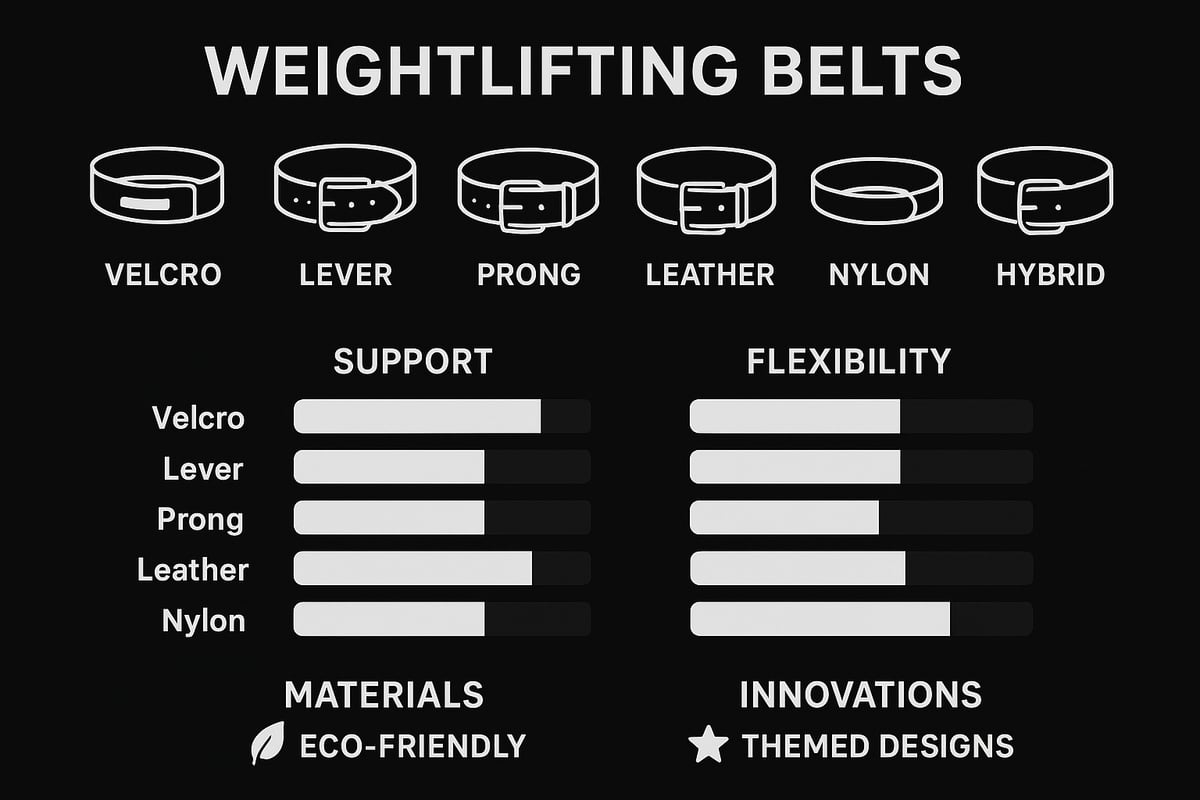
Velcro vs. Lever vs. Prong Belts
When searching for a good weightlifting belt, closure style is a top consideration. Each offers unique advantages for different lifters.
| Belt Type | Pros | Cons |
|---|---|---|
| Velcro | Quick adjustment, lightweight, flexible | Less support for max lifts, can wear out faster |
| Lever | Maximum support, fast on/off, secure | Less adjustable, requires tools to change size |
| Prong | Classic, highly adjustable, reliable | Slower to put on/take off, can pinch if misaligned |
Velcro belts are ideal for functional fitness and quick transitions. Lever belts, like the Premium Lever Weightlifting Belts, deliver unmatched support for powerlifting and heavy lifts. Prong belts remain a favorite for their versatility and traditional feel. Choosing the right closure ensures your good weightlifting belt matches your specific training needs.
Belt Widths and Thicknesses
A good weightlifting belt comes in various widths and thicknesses, impacting comfort and support. Standard 4-inch belts provide ample surface area for bracing, while 3-inch versions suit smaller frames or those needing greater mobility.
Thickness matters too. Most serious lifters opt for 10mm or 13mm belts. Thicker belts offer more rigidity and support for maximal lifts, but may feel stiff for some users. Thinner belts, around 6-8mm, are more flexible and comfortable for dynamic movements.
Proper sizing is essential. Measure around your belly button, not your hips, to ensure a snug but not restrictive fit. Many brands offer detailed sizing charts to help you find the perfect good weightlifting belt.
Material Choices: Leather, Nylon, and Hybrids
Materials play a big role in how a good weightlifting belt feels and performs. Leather belts stand out for their durability and rigidity, making them the go-to for heavy powerlifting. They have a break-in period but last for years with proper care.
Nylon belts are lighter and more flexible, ideal for CrossFit or Olympic lifting where speed and movement matter. Hybrids combine elements of both, offering a blend of support and comfort.
When picking a good weightlifting belt, consider whether you prioritize maximum support (leather), flexibility (nylon), or a mix (hybrid). Material also affects maintenance and longevity.
Specialty Belts
Specialty options add a personal touch to your good weightlifting belt. Custom belts let you choose colors, embroidery, and even motivational quotes. Some brands offer bundles that include lifting straps, wrist wraps, or carrying cases for extra value.
Official belts are designed to meet competition standards for events like the CrossFit Games or USA Weightlifting. These belts are tested for quality and compliance, ensuring your good weightlifting belt is ready for the platform.
Choosing the Right Type for Your Needs
Match your good weightlifting belt to your training style. Olympic lifters often prefer thinner, more flexible belts for explosive movements. Powerlifters gravitate toward thick, rigid lever or prong belts for maximum support during squats and deadlifts.
General gym-goers may benefit from versatile Velcro or hybrid belts that balance support and comfort. Always try on different types when possible and consider your body type, lifting frequency, and personal preferences when choosing a good weightlifting belt.
Trends and Innovations in 2025
The world of good weightlifting belts is evolving. Themed prints, bold colors, and limited editions are more popular than ever, letting lifters express personality in the gym. Buckle technology has advanced, offering smoother adjustments and greater durability.
Eco-friendly materials and sustainable manufacturing practices are gaining traction, giving you more responsible choices when picking a good weightlifting belt. Expect to see more belts made from recycled leather or plant-based fabrics, as well as advancements in ergonomic design and breathability.
How to Choose the Best Weightlifting Belt for You
Selecting a good weightlifting belt can feel overwhelming with all the choices in 2025. The right belt will support your progress, fit your needs, and match your style. Let’s break down the steps to make your decision easy and effective.
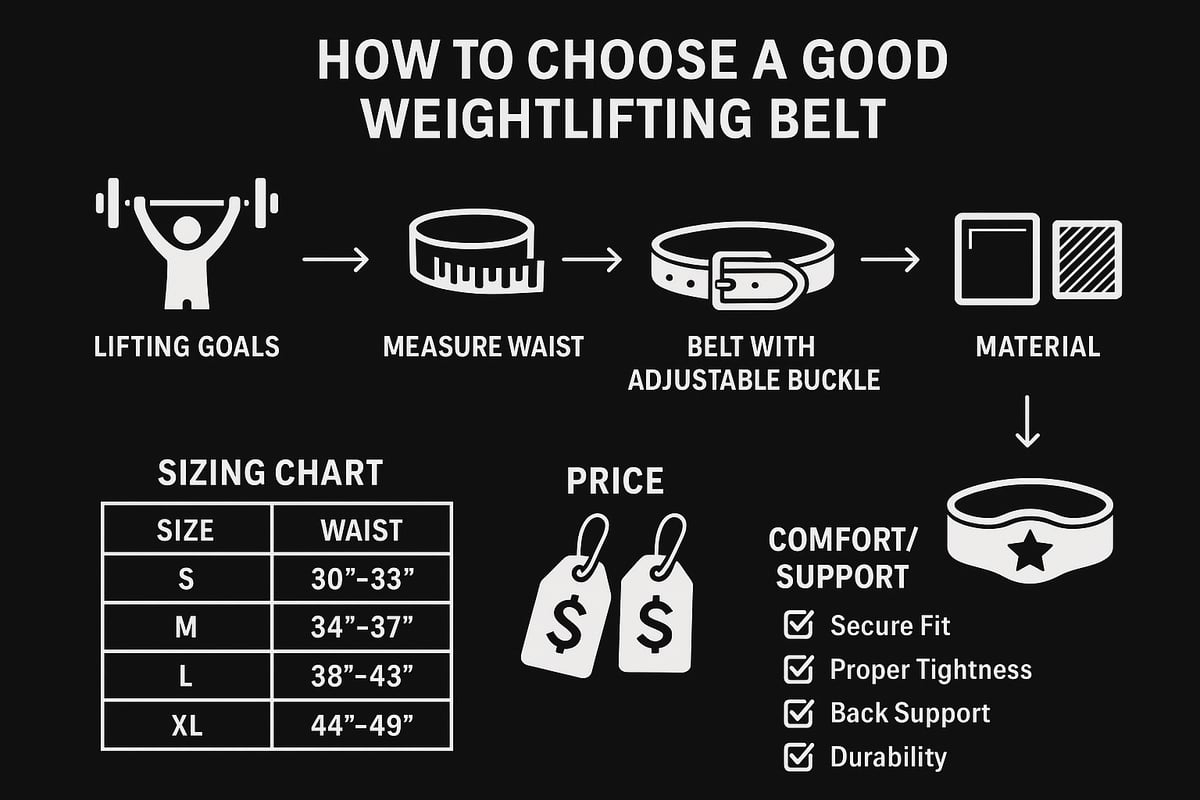
Assessing Your Lifting Goals and Experience
Start by identifying your training focus. Are you a powerlifter, Olympic lifter, CrossFitter, or someone building general strength? Each discipline demands different features from a good weightlifting belt. Beginners often benefit from flexible, easy-to-adjust belts, while advanced athletes may need maximum support for heavy lifts. Take a moment to reflect on your training style and experience. This first step will guide you toward the most suitable belt for your needs.
Sizing: How to Measure for a Perfect Fit
Proper sizing is crucial for comfort and safety. Always measure around your belly button, not your hips, to find the right fit for a good weightlifting belt. Avoid belts that overlap or leave gaps when fastened. Use sizing charts provided by reputable brands, and double-check your measurements. For more detailed advice, check out Choosing the Best Lifting Belt for a comprehensive guide and visual references. The right size ensures secure support during every lift.
Comfort, Support, and Adjustability
A good weightlifting belt should feel snug without restricting your movement or breathing. Look for features like single or double prong closures, lever buckles, or Velcro straps, depending on your preference. Adjustable belts are ideal for dynamic workouts, while rigid designs suit maximum-effort lifts. User feedback consistently highlights the importance of comfort, especially during longer training sessions. Test different options to discover which design best fits your unique needs.
Comparison Table: Closure Types
| Closure Type | Pros | Cons |
|---|---|---|
| Lever | Fast, strong support | Less adjustable |
| Prong | Classic, adjustable | Slower to fasten |
| Velcro | Quick, flexible | Less durable for max lifts |
Quality and Durability
Investing in a high-quality, good weightlifting belt pays off in longevity and performance. Check the stitching, buckle hardware, and material for signs of solid craftsmanship. Leather belts are known for durability, while nylon options offer lighter weight. Many brands provide lifetime warranties, especially on lever and Velcro models. A well-made belt can last for years with proper care, so prioritize quality over flashy extras when making your selection.
Budget and Value Considerations
Prices for a good weightlifting belt range from affordable nylon models to premium leather designs. Consider your budget, but factor in durability and warranty. Sometimes, spending a bit more upfront saves money in the long run. Look for bundles that include accessories or replacement parts for added value. Remember, a reliable belt is an investment in your health and lifting journey.
Style and Personalization
Today’s good weightlifting belt options include custom colors, prints, and even personalized embroidery. Many lifters find that a stylish belt boosts motivation and confidence in the gym. Whether you want a classic look or a bold statement piece, choose a belt that reflects your personality. Matching your gear to your style can turn every session into a more enjoyable experience.
Katamu Co: Premium Lifting Belts & Gear
Katamu Co stands out with premium lever belts and accessories built for durability, support, and style. Their collection features unique, motivational designs for gym-goers who demand both performance and personality. With inclusive sizing and comprehensive bundles, Katamu Co serves every level of lifter. Trusted by over 50,000 athletes worldwide, they focus on customer satisfaction and offer quality guarantees to back every purchase.
Proper Weightlifting Belt Usage: Step-by-Step Guide
Using a good weightlifting belt properly can be a game changer for your strength training. Whether you are new to lifting or a seasoned athlete, following a clear process ensures you get the most support, safety, and performance out of your belt. This step-by-step guide will help you master the basics and avoid common pitfalls, so your good weightlifting belt becomes a powerful ally in your gym journey.
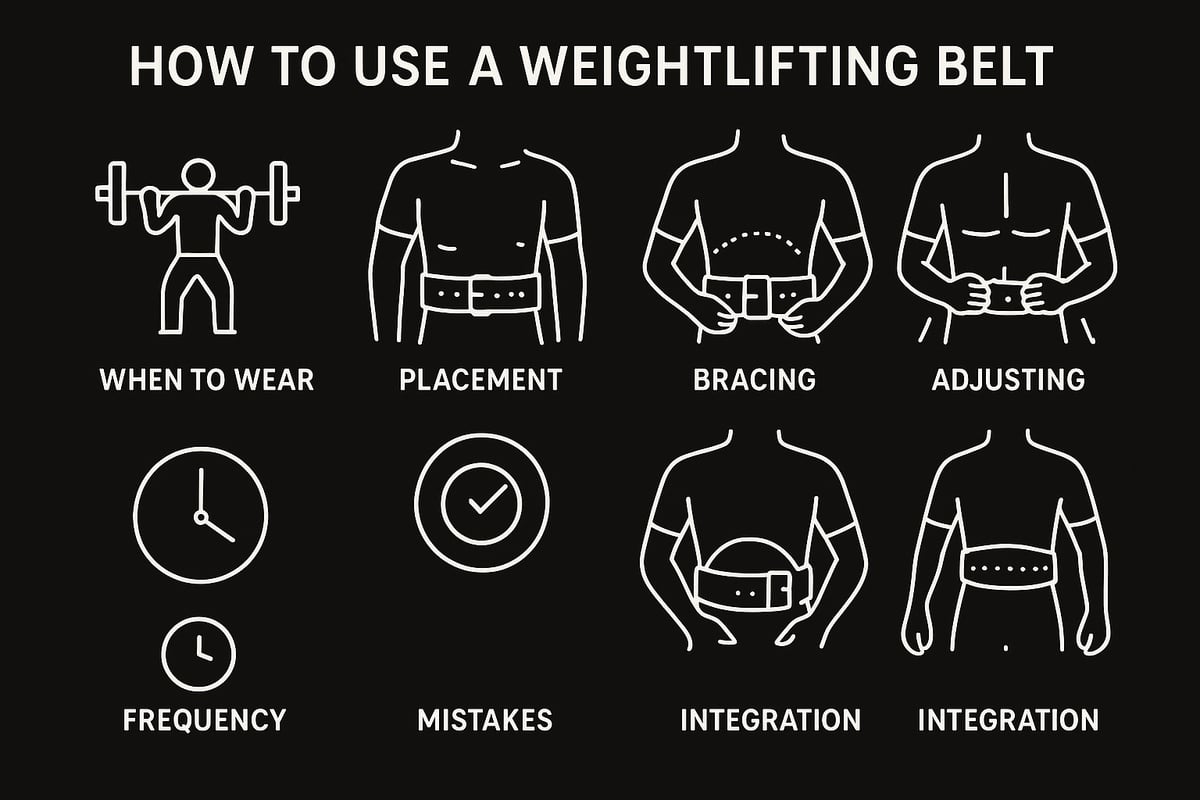
Step 1: When to Wear a Belt
Knowing when to put on your good weightlifting belt is key for both safety and progress. The belt shines during compound lifts like squats, deadlifts, and Olympic moves. The 80 percent rule is a great guideline: use your belt for lifts at or above 80 percent of your one rep max, or during high-volume, heavy sessions.
You may not need your good weightlifting belt for every set, especially during warmups or lighter work. Save it for those challenging sets where your core and spine need extra support. This helps prevent over-reliance while maximizing the benefits when it counts.
Step 2: Correct Placement and Fit
Proper placement of your good weightlifting belt makes all the difference. Start by centering the belt over your belly button, above your hips and just below your ribs. It should feel snug but not painfully tight. You want to breathe and brace your core, not restrict movement.
Visual cues help: the belt should cover the area where you feel your abs flex hardest during a brace. Avoid wearing it too high near the ribs or too low on your hips. A good weightlifting belt in the right spot provides stability without digging in.
Step 3: Bracing Technique
Bracing against your good weightlifting belt is essential for spinal support. Before lifting, take a deep breath into your belly, not your chest. Push your core out in all directions against the belt. This increases intra-abdominal pressure, helping stabilize your spine.
Practice this bracing with lighter weights to master the feel. Drills like standing planks or wall bracing can build the habit. Studies, such as the Influence of weightlifting belts on deadlift kinematics, show that proper bracing with a good weightlifting belt can improve performance and reduce perceived exertion.
Step 4: Adjusting During Workouts
A good weightlifting belt needs periodic adjustment as you move through your session. Between sets, you may want to loosen the belt to allow easier breathing and recovery. For different lifts, you might switch between a tighter or looser fit, or even change the belt type.
Listen to your body. If the good weightlifting belt feels uncomfortable or restricts movement, adjust it. Flexibility in your approach helps you get the best out of your training without unnecessary strain or discomfort.
Step 5: Frequency and Duration of Use
It is tempting to wear your good weightlifting belt for an entire workout, but this is not ideal. Only use the belt for heavy work sets or when the load truly demands extra support. Remove it for lighter sets, accessory work, or cardio.
This approach ensures your core muscles stay engaged and strong even without the belt. Overuse can lead to dependency, so balance your belt usage with raw, beltless training to keep your foundation solid.
Step 6: Common Mistakes to Avoid
Avoid these pitfalls when using a good weightlifting belt:
- Wearing it too high or too low
- Making it too tight or too loose
- Relying on the belt to fix poor lifting technique
- Skipping core training outside of belt use
Remember, a good weightlifting belt is a tool, not a crutch. Use it to enhance your lifts, not as a replacement for proper form and strong fundamentals.
Step 7: Integrating the Belt into Your Training
Make your good weightlifting belt a part of your routine, not just an accessory for max attempts. Start by using it on moderately heavy sets, then progress to your heaviest lifts. Build confidence by practicing bracing and placement every session.
Sample routine: Warm up beltless, add the belt for sets at 80 percent plus, then finish with accessory lifts without it. Over time, this balanced approach will help you lift heavier, safer, and with greater confidence.
Caring for and Maintaining Your Weightlifting Belt
Keeping your good weightlifting belt in top shape is key if you want it to support you for years. A little regular care goes a long way, whether you’re using leather, nylon, or a hybrid design. Let’s break down how to clean, store, and maintain your belt so it stays as strong as your lifts.
Cleaning and Odor Control
Routine cleaning keeps your good weightlifting belt fresh and functional. For leather belts, wipe down with a damp cloth after every session, then let it air dry. Use a leather cleaner occasionally, but avoid soaking. Nylon belts can be hand-washed with mild soap and water, then hung up to dry.
To fight odor and sweat buildup, try a disinfectant spray made for gym gear. Always dry your belt thoroughly before storing it. For more detailed tips, check out this Lifting Belt Care and Maintenance blog, which covers specific methods for different materials.
Storage Tips
Proper storage helps your good weightlifting belt keep its shape and strength. Hang it on a sturdy hook or lay it flat—never fold or crumple it in your gym bag, as this can cause creases or warping. If you travel often, use a belt pouch or dedicated sleeve to protect it from moisture or accidental damage.
Keep your belt away from direct sunlight and avoid very hot or cold environments. Extreme temperatures can dry out leather or weaken nylon, making your good weightlifting belt less reliable over time.
Inspecting for Wear and Tear
A regular inspection routine ensures your good weightlifting belt remains safe for heavy lifts. Look for fraying edges, cracked leather, or loose stitching—these are early signs your belt may need attention. Check the buckle or lever for any wobbling or difficulty closing.
If you notice damage, consider repairing small issues like loose threads, but replace the belt if you see major wear. Many premium belts come with warranties, so keep your proof of purchase just in case.
Maximizing Belt Longevity
Want your good weightlifting belt to last for years? Rotate between multiple belts if you train daily, to give each one a break. Establish a maintenance routine: wipe down after use, deep clean monthly, and check hardware regularly.
Premium belts often last several years with proper care. Follow the manufacturer’s guidelines for cleaning and storage, and always fix minor issues before they become bigger problems.
Customization and Patch Care
Custom designs and patches make a good weightlifting belt unique, but they require special care. Clean printed or embroidered areas gently with a soft cloth, avoiding harsh chemicals. If your belt has removable patches, take them off before cleaning and store separately to keep them looking sharp.
Proper care keeps your personalized touches vibrant and your good weightlifting belt ready for every workout.
Expert Recommendations and Top Picks for 2025
Choosing a good weightlifting belt in 2025 is all about matching your training style, body type, and personal preferences. With so many options available, it’s crucial to focus on quality, support, and comfort to maximize your lifting potential and stay safe. Here are the expert-backed criteria and top picks you need to make the right choice.
What to Look for in a Top-Rated Belt
When searching for a good weightlifting belt, prioritize these features:
- Robust support for your core and lower back
- Comfortable fit that allows natural movement
- Easy adjustability for quick changes between sets
- Durable materials and strong stitching
- Reliable buckle or closure system
- Comprehensive warranty and positive user reviews
A good weightlifting belt should feel secure but not restrictive, giving you confidence during heavy lifts. Always check for quality craftsmanship and long-term durability before making your decision.
Best Belts by Category
The market for a good weightlifting belt is diverse, with standout options for every lifter:
- Lever belts: Top choice for powerlifters, offering maximum support and fast adjustments.
- Velcro belts: Favored by CrossFit and functional athletes for quick on/off and flexibility.
- Prong belts: Classic design, ideal for those wanting reliable adjustability and versatility.
- Petite and women’s belts: Narrower widths for smaller frames without sacrificing support.
- Custom/limited editions: Unique designs for lifters who want to stand out.
Choosing the right category ensures your good weightlifting belt meets your training demands.
Insights from Coaches and Athletes
Competitive lifters and coaches often agree: the best results come from using a good weightlifting belt that matches your goals. Many athletes note increased confidence and improved focus when wearing a belt that fits perfectly. Some powerlifters swear by lever belts for heavy squats, while Olympic lifters may prefer prong or Velcro styles for dynamic movements.
Expert tip: Don’t rely solely on your belt; pair it with solid technique and core training for the best results.
Latest Trends and Innovations
In 2025, the good weightlifting belt landscape is evolving with exciting innovations:
- Eco-friendly materials and sustainable manufacturing
- Advanced buckle technology for faster adjustments
- Themed prints, bold colors, and limited-edition releases
- Hybrid designs combining leather and nylon for optimal comfort
- Improved sizing for inclusive fit across all body types
Staying updated on these trends helps you find a good weightlifting belt that’s both high-performing and stylish.
Where to Buy and What to Avoid
When shopping for a good weightlifting belt, stick to trusted brands and authorized retailers. Look for:
- Quality stitching and reliable hardware
- Clear warranty and return policies
- Responsive customer support
Avoid belts with poor construction, unreliable closures, or no warranty. For a deeper dive into the science and debate behind belts, check out The Weight Belt Controversy, which explores their effectiveness and safety.
Trying a belt in person, if possible, can help ensure the right fit and feel.
Community and Support
A good weightlifting belt is only as good as the support behind it. Top brands offer:
- Sizing help and detailed guides
- Easy returns and exchanges
- Active communities for sharing tips and progress
- Responsive customer service for troubleshooting and advice
Connecting with other lifters and accessing brand resources can make your experience with a good weightlifting belt even better. Look for brands that prioritize lifter satisfaction and ongoing support.
Frequently Asked Questions About Weightlifting Belts
Looking for answers about finding a good weightlifting belt or how to use one? Here are the most common questions lifters ask, along with expert-driven, straightforward answers to help you make confident decisions in the gym.
Do Weightlifting Belts Weaken Your Core?
A good weightlifting belt does not weaken your core if used correctly. In fact, wearing a belt helps you engage your core muscles more effectively during heavy lifts. Research shows that belts increase intra-abdominal pressure, supporting your spine and allowing you to brace harder.
Some believe that relying on a belt means your abs will get weaker. The truth is, as long as you still train your core without a belt too, your strength will not decrease. Studies, such as Weightlifting belt use patterns among health club members, reveal most lifters use belts for their heaviest sets, not all the time, which helps maintain core strength.
How Tight Should a Weightlifting Belt Be?
Your good weightlifting belt should feel snug but never painful. You should be able to take a deep breath and brace your core against the belt. If you cannot breathe or feel pinched, it is too tight. If the belt moves or gaps when you brace, it is too loose.
Try this: fit two fingers between the belt and your body. Adjust as needed until you feel secure and supported without restricting movement. Always test your setup before heavy lifting.
Can Beginners Use Weightlifting Belts?
Beginners can safely use a good weightlifting belt, especially when learning technique for heavy lifts. However, it is best to focus on mastering form and building base strength first. Use the belt for lifts at or above 80% of your one rep max, or when attempting personal bests.
For everyday training, especially with lighter weights, skip the belt to develop natural core stability. Add it to your routine gradually as your experience grows.
Are Weightlifting Belts Allowed in Competitions?
A good weightlifting belt is permitted in most major competitions, including powerlifting, Olympic lifting, and CrossFit. Each sport has specific rules for belt width, thickness, and materials.
Check the event’s guidelines before competing. For example, some federations require belts to be under 13mm thick and 4 inches wide. Official belts often need to be plain with no additional padding or stiffeners.
How Long Do Weightlifting Belts Last?
With proper care, a good weightlifting belt can last many years. Leather belts usually outlast nylon ones, sometimes holding up for a decade or more. Nylon and hybrid belts typically last 3–5 years, depending on frequency of use.
Regular cleaning, proper storage, and routine inspections will maximize your belt’s lifespan. Replace your belt if you notice fraying, broken buckles, or lost rigidity.
What’s the Difference Between Powerlifting and Weightlifting Belts?
Powerlifting belts are usually thicker and wider, offering maximum support for squats and deadlifts. Olympic weightlifting belts tend to be thinner and more contoured, allowing for greater mobility during dynamic movements like the snatch or clean and jerk.
Choosing a good weightlifting belt depends on your training style. Powerlifters need rigidity, while Olympic lifters benefit from flexibility.
How Do I Know If My Belt Is the Right Size?
A good weightlifting belt fits snugly around your core, not your hips. Measure around your belly button, not your waistline. Your belt should close comfortably in the middle holes, with no overlap or large gaps.
Check the manufacturer's sizing chart for accuracy. If you are between sizes, size down for a more secure fit. Always test the fit during a few warm-up sets before loading up the bar.
Now that you know what to look for in a great weightlifting belt and how it can keep you safer and stronger in the gym, why not take the next step toward better performance and confidence Every lift feels different when you have the right support and style backing you up—especially when your gear is built to last years and actually looks good too If you’re ready to experience the difference for yourself and find a belt that matches your goals and personality Build your setup with Katamu’s premium lever belts and take your training up a notch
